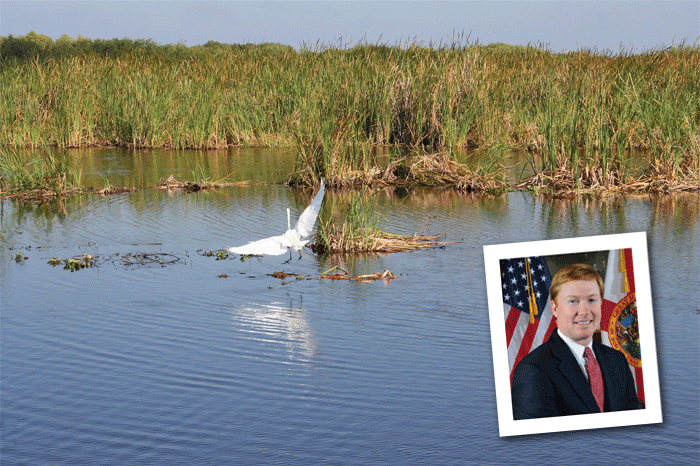WATER IS THE BIGGEST long-term challenge facing Florida. And that is exactly why I have implored all Floridians, including the general public, legislators and the media, to take seriously the more than one-billion-gallon-per-day shortfall Florida will face by 2030 if we do nothing.
This legislative session, I am working with the Legislature to develop and implement comprehensive water policy that will help ensure we have a healthy and abundant supply of water. The ideal time to accomplish this goal is when we are not in a reactionary mode to an active hurricane season or a particularly severe drought, but rather to move forward at a time when we can make the best possible decision in a non-reactionary, thoughtful way.
Fortunately, in relatively recent years, Florida has built a strong foundation in law for the protection and management of our precious water resources. From the Water Resources Act of 1972, which established our five water management districts, to the Water Protection and Sustainability Act of 2005, we’ve made measurable improvements to the health and supply of our water.
The agriculture industry has implemented best-management practices and invested in new technologies to reduce consumption of precious water resources. We’ve replaced inefficient irrigation systems with more precise methods, like subsurface drip irrigation. We use real time, local data on temperature and rainfall to make more informed decisions about the use of resources. Because of the best-management practices and new technologies adopted over the last decade, Florida agriculture is saving 33 million gallons of water per day — or 12 billion gallons of water per year. At the same time, the implementation of best-management practices in the Everglades Agricultural Area resulted in a 79 percent phosphorous reduction.
Not just agriculture, but all sectors of water users in Florida are making strides to protect our water resources. Through water conservation, as well as the development of alternative water sources, we have reduced our overall consumption of water. Per-capita water consumption in Florida fell from 123 gallons in 1995 to 89 gallons in 2010.
Much more remains to be done, though, if we want to ensure we have a healthy and adequate supply to meet our future needs. Our springs have played second fiddle to South Florida’s complex and expensive plumbing issues for too long. These first-magnitude springs are a global treasure and the original tourist destinations. The St. Johns River, Apalachicola Bay, and Northern Everglades all face their own unique challenges. This is truly a statewide concern, and the time to act is now.
If we take care of our natural systems, we are taking care of our urban water supply needs. If we restore our springs, we are supporting tourism and forestry and the many jobs that benefit from healthy ecosystems and a high quality of life.
Water is Florida’s “golden goose.” It is vital to every industry in every corner of our state. We need to put the policy in place to do this right, and we need to do it now.
CREDITS
article by Florida Commissioner of Agriculture ADAM H. PUTNAM (inset in main photo)
photo by ANTHONY DILAURA

